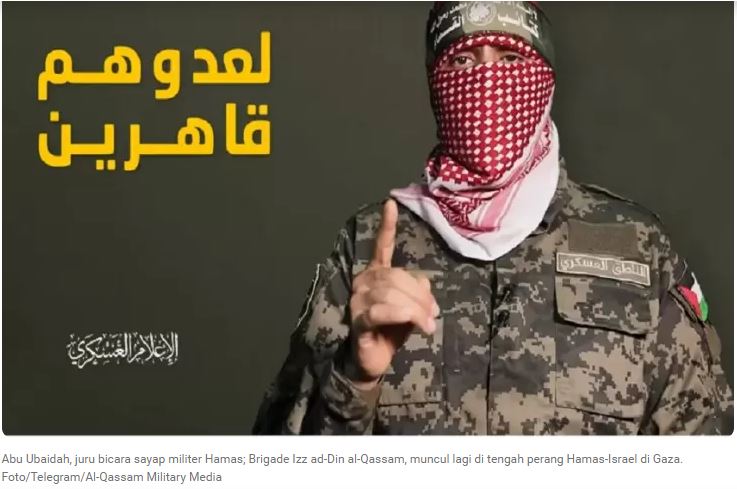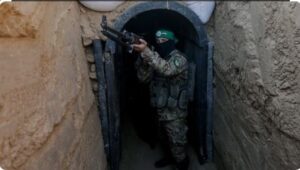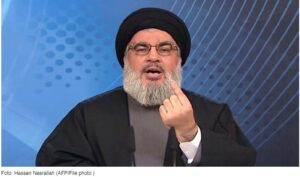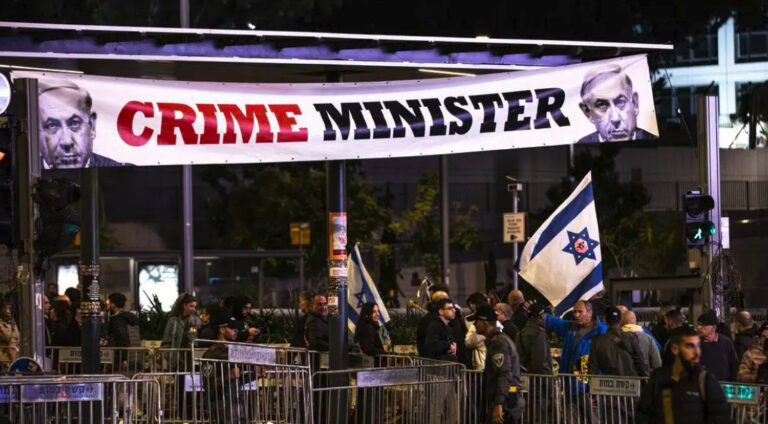
Brigade Al Qassam Hamas
STRATEGIC ASSESSMENT. Thousands of Hamas militia fighters, accompanied by allied forces from Palestine Islamic Jihad (PIJ), conducted a combined arms land, sea, and air attack from Gaza into Israel. The groups simultaneously launched a reported several thousand rockets and short-range missiles firing on cities in southern Israel. The attackers named their operation “Al Aqsa Storm,” after the Al Aqsa Mosque in Jerusalem. The attack succeeded initially in occupying several Israeli towns, taking hundreds of Israeli residents as well as Israeli Defense Forces (IDF) personnel as hostages, and killing over 700 Israelis, with that number expected to rise. The hostages will present a complicated situation for the IDF as it puts together an operational response. Hamas militants overran Israeli military outposts, seized weapons and equipment, and established logistical lines from within Israeli territory. Israeli officials issued no warnings and took no preventive action in advance of the assault, suggesting it lacked intelligence on the planning and preparations for the attack, despite a sharp increase in tensions between Israeli authorities and Palestinians in recent months. It also seems that the Israeli government and intelligence officials downplayed the importance of recent military exercises on their border, mimicking incursions into Israeli territory by both Hezbollah and Hamas, respectively. Hezbollah’s war games occurred in May, while Hamas’ military maneuvers took place over the past several weeks.

Experts and many press outlets termed the attack “Israel’s September 11” or “Israel’s Pearl Harbor.” The timing of the attack was deliberate, occurring on the Jewish Sabbath and the day after the holiday Sukkot; it also coincided with the fifty-year anniversary of the Yom Kippur War, a reminder to many in the region about the last time Israel was caught off guard by a surprise attack. Hamas’ attack will have both political and operational impacts that are unprecedented in the context of the Israeli-Palestinian conflict. The situation is escalating, with Israel in the early stages of its counteroffensive. The United States is pledging additional military aid to Israel and also sending a carrier strike group, headlined by the USS Gerald R. Ford, to the eastern Mediterranean as a show of support.

The early focus of Israel’s response, which included the call-up of reserves, centered on retaking the captured towns, locating and freeing captured Israeli citizens, and striking Hamas and PIJ targets in the Gaza Strip. Most experts expect that Israel will conduct a broad counteroffensive, including ground operations, in an effort to root out Hamas’ military infrastructure. Israeli, U.S., U.N., and other officials worldwide, through various statements, sought to deter Palestinians in the West Bank and Lebanese Hezbollah from joining the attack. However, on October 8, Hezbollah launched rocket attacks on Israeli positions in disputed territory along the Israel-Lebanon border, accompanied by a statement in support of the Hamas-led operation. While the limited nature of the rocket attacks may appear to be merely symbolic, there might be a deeper message Hezbollah is seeking to convey, attempting to shift the current rules of engagement as occurred following the July 2006 war between Israel and Hezbollah as a way of establishing a new deterrence policy to include Gaza. Israel responded with a limited counter-battery fire, although the potential for escalation into a broader clash remains significant. Hezbollah joining the conflict would be a game changer, opening up another front against Israel. Like Hamas, Hezbollah is a well-armed and well-trained militant group, but even more capable in terms of what it can bring to bear in an asymmetric conflict. The group is battle-hardened from fighting for years in Syria, where its operatives have gained valuable battlefield experience and experimented with new weapons systems that could be deployed against Israel.

Aside from the question of the failure of Israeli intelligence, the attack is likely to lead to broad policy re-evaluations in several regional and international capitals, including Washington. The most immediately obvious motivation for the Hamas-led offensive was to retaliate for the alleged recent Israeli abuses against Palestinians on the West Bank, including expansion of settlements, confiscation of Palestinians’ property, suppression of Palestinian protests, and other purported abuses. However, the operation might also represent the opposition of Hamas and its allies to the recent normalization of relations between Israel and several Gulf and other Arab states’ pacts – termed the “Abraham accords” which largely abrogated longstanding Arab pledges to link recognition of Israel to an Israeli-Palestinian settlement. The operation came amid reports that the Kingdom of Saudi Arabia might be close to an agreement brokered by U.S. officials, to normalize ties with Israel in exchange for security guarantees from Washington but requiring only modest Israeli commitments to improve the living situation for the Palestinians. Those terms, if finalized, would represent a Saudi abandonment of the 2002 Arab initiative the Kingdom authored – in which the Arab states agreed to normalize relations with Israel only after a comprehensive solution for the Palestinian conflict. Whether Hamas and its allies intended their attack to derail an Israel-Saudi agreement is unclear, however an already complicated normalization pact, has been made even more difficult by the Hamas attack.
The role of Tehran in directly backing the Hamas-led offensive will be more apparent in the days to come, but what is already apparent is that Iranian leaders and media cheered the assault as just retaliation for what they consider Israeli repression of the Palestinians. More concretely, it would not have been possible for Hamas to execute such a complex attack without significant Iranian tutelage—not just the provision of weapons and training but also intelligence, surveillance, and reconnaissance support in some form. Abu Obaidah, the spokesperson of the Izzuddin Al-Qassam Brigades, confirmed as much, stating at a rally, “We thank the Islamic Republic of Iran who provided us with weapons, money and other equipment. [Iran] gave us missiles to destroy Zionist fortresses and helped us with standard anti-tank missiles.”

The attack demonstrates that Tehran is able to play the role of spoiler through the various proxy forces it has long cultivated in the region, where it has developed an arc of non-state actors stretching from the Levant to the Arabian Peninsula. Iran’s support to violent non-state actors throughout the Middle East is a force multiplier for these groups’ capabilities, with Tehran seeking to create several Hezbollah like entities it can unleash against its adversaries. The attacks by Hamas can be seen as part and parcel of Iran’s “unity of fronts” strategy, designed to surround Israel from Gaza, to the Golan Heights to Lebanon. It also sends a clear message to Israel that, if it chooses to do so, the Iranian regime can open multiple fronts against Israel.
For Israel, the Hamas-led operation has brought unity and, at least temporarily, muted the dispute over Prime Minister Netanyahu’s controversial judicial reform legislation. However, the attack undermines Netanyahu’s insistence that he singularly brings peace and security to Israel. Netanyahu is trying to survive this ordeal politically and offered to coordinate with the political opposition in Israel to form an emergency government, yet to do so, the current Prime Minister would have to purge some of his most extreme far-right allies, a move not supported by his Likud party. In the coming weeks and months, the reckoning within Israel will almost certainly include government commissions on how this intelligence failure unfolded and who is to blame. For now, however, Israel will refocus its military operations to concentrate on addressing the threats emanating from the ongoing attacks by Hamas (TSC).





